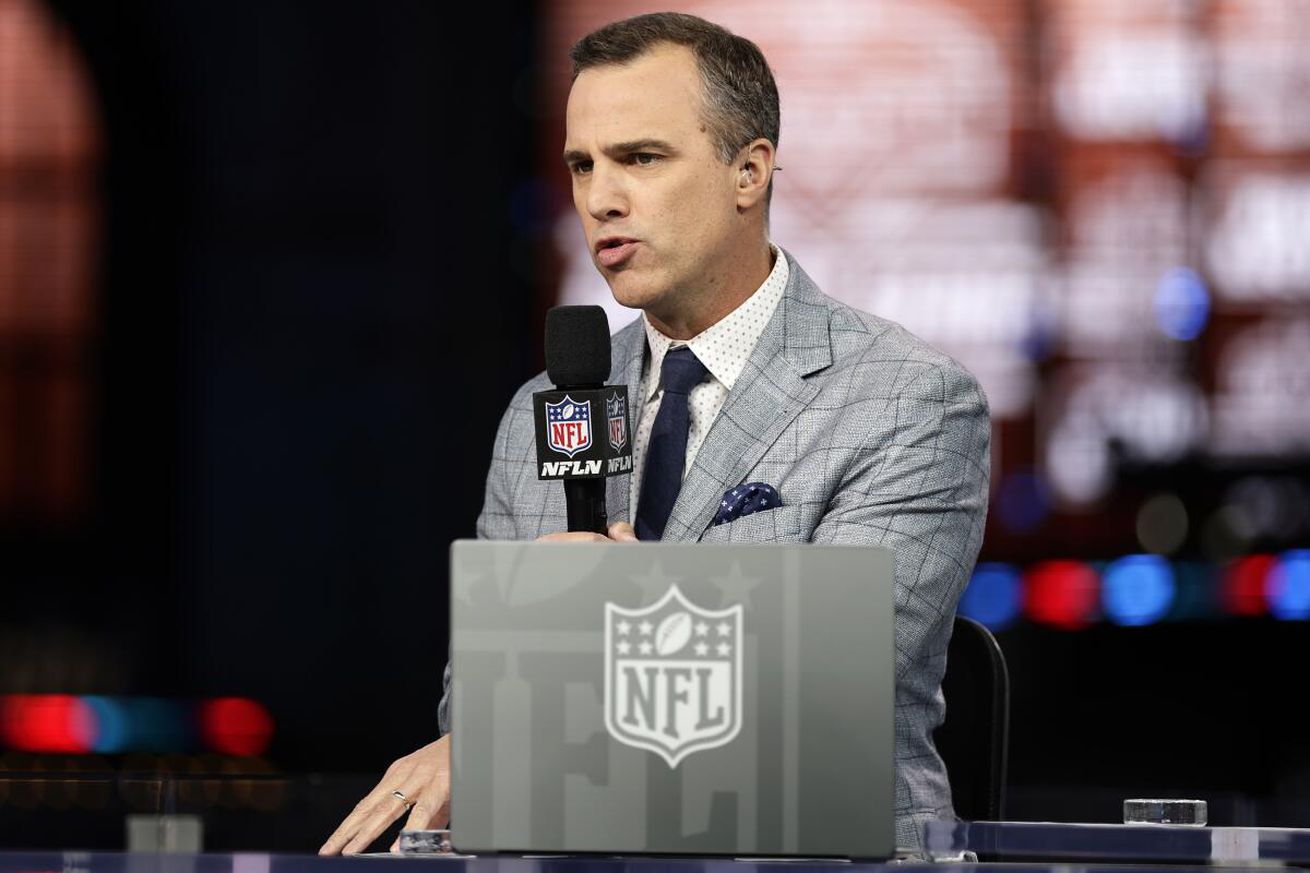
Your source for all Chargers and NFL news from around the web.
Good morning, Chargers fans!
The way in which opinions vary so wildly on how to rank draft prospects comes from the varying ways in which people scout them. I began my education in what to look for when I first listened to the Move The Sticks podcast with Daniel Jeremiah and Bucky Brooks over a decade ago. The dynamic pair of former scouts talked through what they looked for and I tried to spot what they were describing on the first sub five-minute Youtube highlight video I could find on the top guys in the class. It was only after I became a coach that I learned what traits I personally liked to see in a player as I understood how you can teach the techniques associated with those traits. After many years of fumbling around on Youtube videos (shoutout to all the guys who thanklessly upload full game cut ups), I finally found a source for all-22 tape and since then I have learnt a lot more on what you need to look for in a college prospect to understand how they will translate to the NFL. So I thought I would pass on the knowledge that I have gathered in the unorthodox and slow manner I went through, so that the BFTB community can be the ultimate destination to find draft prospect evaluations for all Chargers’ fans.
Firstly, I think it is so important to ignore as much of the noise about a prospect as you can manage, I have been convinced about players before I’d even turned on the film because people whose opinions I respect have done their work on them and come to their conclusions, only for the prospect to be nothing like I imagined on tape. The only way to steer clear of the inevitable groupthink that happens every spring is to focus only on what you see on tape. Obviously you will still need to find a source to find out which players to watch without wasting your time on projected UDFA players, I usually refer to https://jacklich10.com/bigboard/nfl/ as it gives me a good understanding of where the industry ranks a player as a whole without having to read profiles and have a predisposition to what I should be looking for when doing my own scouting.
Next up, how to find game film. Now as much as I have said moving past being a Youtube scout has helped my development, I wouldn’t even be in this position if it wasn’t for that source. My advice is to stop watching highlight videos and instead try to find full game cut-ups that show you every snap that a player took in a game. Just search “Player X vs” and if they are a well known name someone will have performed this admirable service for you. It is vital to see how a player works away from the ball and it is even more important to see their mistakes. There are ways to find All-22 film, I will not share my source on a public platform but if anyone is itching to get into full-field multiple-angle film then they can message me on Twitter.
Now the important part, how to watch game film. I am a defensive backs’ coach by trade so I will use cornerbacks as the basis example for this exercise, therefore everything I say from now will be from that perspective.
People tend to focus on the outcome of play; did he pick the ball off, did he miss a tackle or was he burnt for a touchdown. However this is a small part of the puzzle, in fact for me it is probably the least important part of a play. This may sound counterintuitive but I would rather see a perfectly executed coverage snap that caused the quarterback to take a dangerous shot that miraculously paid off in a touchdown than if I saw a dynamic pass break up on a late throw that sailed on a wide open receiver. As part of my coaching education I was taught to grade plays based on three separate scores that were weighted based on importance;
- Alignment: Incorrect = -1, Correct = 0
- Assignment: Incorrect = -1, Correct = +1
- Execution: Incorrect = -1, Correct = 0, Excellent = +1
This means every play grade can range from -3 to +2 and a score for a normal grade where a player did their job and nothing further is +1, you might be surprised to know the average player scores well below 1.0 per play at the college level. This system gives an overall picture of how a player performs across a game, and therefore a season, but it also details out where they need to improve. Below is an example from a single game from my 2021 defensive backs group.
/cdn.vox-cdn.com/uploads/chorus_asset/file/25305267/DB_Score_Tracker_30_05_21.jpg)
1 – Alignment (Pre-snap)
The first score is for alignment, most of this happens pre-snap therefore to score this properly you need to know the responsibility they have within the defense on this play, this will be the coverage type and their run responsibility. Now even without the upfront knowledge of the defensive scheme you should be able to tell whether they are in man or zone, and be able to read if they are responsible for the outside run lane or whether they have an interior gap (if they are in the box or playing an apex spot). If they are in the wrong position to be able to achieve what the play call has set out then they need to be marked down. To know whether they are correct or not you need to think about what could happen from that position, with corners the biggest one is if they are lined up with the right leverage relative to the rest of their teammates. Playing an inside shade for man and an outside shade for zone is the basics but spacing to the rest of the coverage is just as important. As the amatuer scouts that we are you won’t want to spend a lot of time spotting whether their alignment is absolutely perfect, however if it becomes a repeated pattern then it is a red flag.
2 – Assignment (Post-snap to release)
Assignment is the section with the biggest variance because you either did your job within the play call or you didn’t, there is no gray area here. Again this will require you to know the assignment of that player to the best of your ability. Now please note that you won’t always get this right, for example pattern match coverage without the exact team rule book is very tough to be completely accurate on. The way to overcome not knowing complicated concepts is to research, for defensive schemes I always refer to Cody Alexander (@The_Coach_A) and Honest NFL (@TheHonestNFL). If you still aren’t able to find answers then approximate and use Occam’s Razor, if you see the end result of the coverage roll looks like a Tampa 2 then it most likely it. This part is where you should watch the play multiple times to observe different key traits; did he use the right jab technique down in press? Did his footwork allow him to be efficient and not take false steps? Was his hip transition clean and carry his speed through? There are many factors to take into consideration for the technical skills required for each position, I could write another 1000 words just on cornerbacks alone, but the message is always to look at the details in this section more than any other. Observe and note all the details you can from the moment the snap is made to the time the ball is released.
3 – Execution (post release)
The final chapter of a play is always the execution. The reason this grading system has three possible scores from this section is that if you made the outcome of a play worse then you get a negative score, if you didn’t affect the outcome of the play it is neural to reflect that and if you had a positive outcome on a play then you deservedly get a boost to your total score. To give examples a negative play is a missed tackle, neutral play is making a tackle as expected, a positive play is a tackle from an unlikely angle that the player has had to work for. I would argue that this is the section that separates the elite from the good however it is also the section I can forgive the easiest. If a player was in the right position to make a play and falls just short I can live with that as the law of averages dictates that luck will reverse at some point.
The last thing to note is how to collate all this information, I use a Google Sheet that means I can access it at any time and manipulate data outputs at the end of the my evaluation process. I add in as much data as I think is relevant and if I had the time I would input every measurable I could to really start to build profiles that fit trends and maybe even counter my own personal bias (I love a corner who wants to be involved in the run game). I have included a snapshot below:
/cdn.vox-cdn.com/uploads/chorus_asset/file/25305263/Cornerbacks_Example_Ranking.jpg)
Overall the process of watching and evaluating players is unique to every individual and success rates in identifying the best players at each position is below 50% when just looking at first round picks alone so there is no correct way to do things. I have changed my process each year with the aim of being more efficient at the same as being more detailed and it is always a challenge to get done by draft night. I hope this has provided some insight into how to go build a process that can give you a balanced approach to evaluating players that can be consistent and comparable.
If anyone has any specific techniques, concepts or general questions about how to scout players then please let me know in the comments, I’d be more than happy to answer them all.
And now for today’s links:
Chargers News:
Daniel Jeremiah sets out what he sees as the five avenues that the Chargers can explore in the first round (Chargers.com)
Daniel Popper has written a brilliant story of the relationship between Jim Harbaugh and Ryan Leaf (The Athletic)
Joey Bosa gives an insight into his conversations with Jim Harbaugh so far (Chargers Wire)
There are rumours that teams have set their sights on trading for Khalil Mack (Bleacher Report)
NFL News:
Eric Bieniemy has agreed a deal to be UCLA’s offensive coordinator after his exit from the Washington Commanders (ESPN)
The Miami Dolphins have cut Xavien Howard and Emmanuel Ogbah to make cap space (ESPN)
Adam Rank explores five big names that could be traded this offseason including Justin Jefferson, Stefon Diggs and Brandon Aiyuk (NFL.com)
A new kickoff proposal taken from XFL could be tabled at the Annual League Meeting in a month’s time (NFL.com)
Andy Reid is open to a new contract extension that would make him the highest paid coach in the league (NFL.com)
Multiple teams would be interested in quarterback Sam Howell if the Washington Commanders move on from him (CBS)


















You must be logged in to post a comment Login